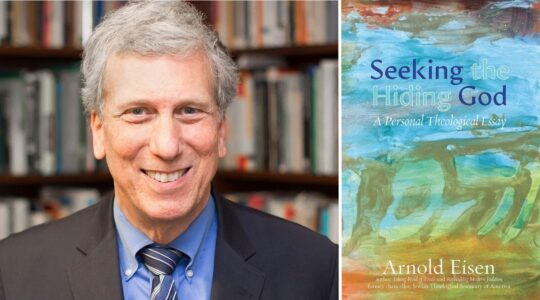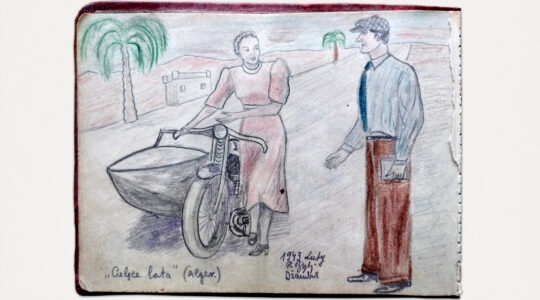For many American Jews the well-documented reports of increased anti-Semitism this summer in such countries as England, France, Hungary, Germany and Sweden, sparked by the Gaza war, only confirmed a perception that there is no future for Jewish life in Europe.
There were large protests and demonstrations on the streets of major cities during the 50-day conflict, some punctuated by calls to “kill the Jews,” as well as physical attacks on Jews and efforts in some countries to ban shechita (kosher slaughter of animals) and brit milah (circumcision). And assimilation rates continue to rise, in some nations as high as 80 percent.
All true and alarming.
But not the full story, according to Barbara Spectre, the founding director of Paideia, the non-denominational European Institute for Jewish Studies, in Stockholm. The main program of the institute, founded in 2001 with funding from the Swedish government, is a full academic year of interactive study of Jewish texts and courses in leadership development, with the goal of educating and training “the best and the brightest” young people “who can lead a true renaissance of European Jewish culture,” according to its website. It now has 450 alumni in 35 countries.
Since my encounter with Paideia in the summer of 2010, when I visited and met more than two dozen participants from Eastern and Western Europe who were initiating renewal efforts in their own communities, I have come to recognize that while the future of Jewish life in Europe is deeply worrisome, the headlines we read here don’t tell the whole story.
So I appreciated the opportunity to speak with Spectre during her visit to New York this past week. The American-born educator, who left the faculty of the Shalom Hartman Institute in Jerusalem to found Paideia, acknowledged at the outset that the “unholy alliance” of anti-Israel and anti-Semitic sentiment from both the far left and the far right has created “a severe problem that must be dealt with.” But she cautioned against making sweeping statements about Europe in general, and suggested that the problem be explored on a country-by-country basis, noting that many European governments are “our allies.”
“We have to be careful and strategic,” she said. While Hungary, with its strong supremacist, nationalist government presents a threat, for instance, the German government is aggressive in its efforts to confront the anti-Jewish problem. Just last week the Conference of European Rabbis, meeting in Tbilisi, Georgia, urged governments across the continent to pass laws banning hate speech against Jews, as have France and Germany
And while Sweden has endorsed a Palestinian state, that doesn’t mean its government is anti-Semitic, Spectre said, noting that Stockholm officials are in close consultation with local Jewish leaders in dealing with issues as heightened security, anti-Semitism and the Mideast conflict.
“We should be celebrating complexity or at least dealing with it,” Spectre said.
The Ugly Backlash
Support the New York Jewish Week
Our nonprofit newsroom depends on readers like you. Make a donation now to support independent Jewish journalism in New York.
Jewish communal leaders in European (and South American) countries may not say so publicly, but they resent when some American Jewish officials or activists fly in after a disturbing incident, hold a press conference, denounce the anti-Semitic act — as well as the authorities, on occasion, for lack of vigilance — and then fly home, leaving the local Jewish leaders to deal with the ugly backlash.
Similarly, European Jewish officials cringe when Israeli political leaders, in their quest to promote aliyah, assert that there is no future for European Jewry. Asserting that “the world hates us, Israel is the only safe haven,” could become a self-fulfilling prophecy. Such an attitude is far from helpful to those who would prefer to build a more secure future in their native country, fostering democracy and pluralism, rather than emigrate out of fear of oppression.
For a still small —but growing —percentage of European Jews, aliyah is the answer, but they are often motivated by declining economic conditions as well as concerns over anti-Semitism.
Spectre believes the main underlying problem for European society is its lack of integration of its Muslim populations. Ironically, based on the horrors of what happened to the Jews during the Holocaust, some countries “over-reacted” by creating separate neighborhoods and schools for their immigrant populations to protect them, leading to separatism and deep, sometimes violent, resentment. She believes that Muslim extremism is more about this cultural upset than religion.
Many sociologists point to the fact that the U.S. has seen less extremism of this nature because its emphasis on multiculturalism allows minorities to maintain their own sense of identity within the shared goals of the larger society.
Signs Of Life
In the midst of erosion of Jewish life in Europe there are signs of hope, if you look for them.
Spectre spoke with pride of a group of 10 Paideia alumni who created a think tank that met in mid-September. Its members are writing position papers based on approaching contemporary issues through the lens of Jewish texts. They call their group Beit Machshavah (The House of Thought) because their focus is on ideas rather than ritual practice, said Spectre, noting that they are “deeply rooted in Judaism and deeply rooted in Europe.”
Another Paideia program, held each June and called “Paradigm,” brings 10 New Yorkers and 10 Europeans — young Jewish professionals, educators and entrepreneurs — to Stockholm for five days to study Jewish texts together, hear from top scholars, explore issues of identity and better understand each other’s communities.
As noted in last week’s issue, a new documentary on Jewish life in Poland just had its premiere in New York City and will be shown here again in several weeks. Perhaps surprisingly, the film, entitled “The Return,” focuses on the remarkable popularity of things Jewish in the land of Auschwitz — from klezmer to cuisine (especially gefilte fish) to interest in Jewish practice. It highlights the stories of four women, two of whom were not born Jewish, becoming closer to Jewish life in a culture where many young people are discovering their long-buried Jewish roots.
Earlier this month, the $67 million Museum of the History of Polish Jews opened its core exhibition in Warsaw, covering Jewish life in Poland from the Middle Ages to today. The Holocaust is included, but only in one of the museum’s eight galleries, which are expected to attract 500,000 visitors in the next year.
Sigmund Rolat, a Jewish concentration camp survivor who settled in America and is now a major funder of the museum, explained that he was concerned about the perception young American and Israeli Jews have on their visits to Poland.
Support the New York Jewish Week
Our nonprofit newsroom depends on readers like you. Make a donation now to support independent Jewish journalism in New York.
They see “death camps and cemeteries and empty places where synagogues used to be,” he told a New York Times reporter. “Ours is not another museum of the Holocaust. We are more than victims. Ours is a museum of life.”
Jonathan Ornstein, director of the JCC in Krakow, called popular trips for American teens such as March of the Living “death tours,” which he said are “not good for Judaism,” a religion he describes as one “of life, of the future.”
Overall, to be sure, European Jewry is in decline, in numbers, affiliation and morale. Anti-Semitism presents a serious threat, and aliyah is a valued goal for those who choose it. But it is self-defeating to write off those who remain, to think of Europe as a vast graveyard. It’s our responsibility to help nurture the budding renaissance taking place among young Jews across Europe and support those who want to maintain and strengthen their communities, just as we seek to do here in the U.S.
The New York Jewish Week brings you the stories behind the headlines, keeping you connected to Jewish life in New York. Help sustain the reporting you trust by donating today.





